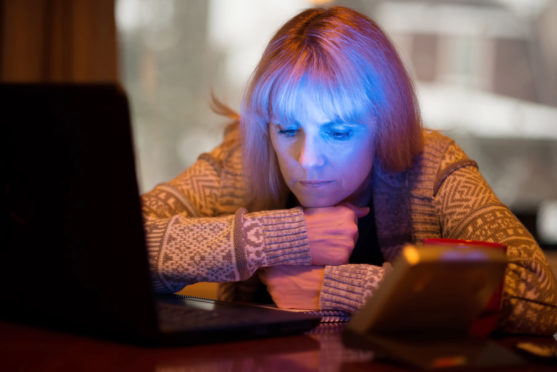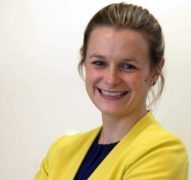“How old are you?” the woman barks at us.
“Er, 18 – no 20,” my cousin-in-law blurts out in a panic, even though the sign clearly states that only those under 16 must be accompanied by a parent or guardian.
The technician eyes her suspiciously. Luckily she’s with me and I look plenty old enough.
We are waiting to get our ears pieced, in my case the cartilage of my right ear.
“How old are you?”
The question comes again, directed at me this time.
“Umm, 34,” I admit quietly. A girl sniggers.
Midlife crisis for one?
I go through with it anyway, and am pleased with the result, although in hindsight, it wasn’t one of my best ideas as my toddler Maya keeps grabbing the stud. Ouch.
I’ve also been wondering why I decided to get it done, hoping to make sense of my uncharacteristic impetuosity.
Never a rebel and routinely cautious, this was a very un-Lindsay move.
Obviously it was fun going along with Mr R’s cousin, a decade-and-a-half my junior (she is in fact 20 and wasn’t lying).
But – on a more serious note – I always feel low this time of year and often find myself overcompensating.
I’ve never been diagnosed with Seasonal Affective Disorder (SAD), don’t think I have it and wouldn’t presume to speak for anyone who does.
Yet, usually optimistic, I invariably suffer with what I’ll call the January Blues. I find these early months – the bleak mid-winter – hard.
I suspect it’s a combination of the festivities shared with nearest and dearest being over, the short days and cold weather.
This year there’s the additional factor of a family bereavement. Mr R’s grandma passed away in the run-up to the holidays.
He says it feels like a “changing of the guard” and I recall experiencing this revelation when my last grandparent died.
Our parents are now the final line of defence and we in turn have moved up a rung on life’s ladder, which takes some getting your head around.
Moreover, I’ve given up the day job and gone freelance to look after my daughter.
Don’t get me wrong, I’m delighted to have the opportunity to do so and certain I made the right choice.
But nonetheless it’s a daunting prospect having been defined so much by my career as an adult.
And during my maternity leave, I periodically struggled to maintain a sense of self, so there’s some anxiety about falling into the same trap again.
From talking to friends, I can tell I’m not alone and there are plainly others far worse off.
The NHS estimates that one in 15 people in the UK is affected by SAD – also known as winter depression – between September and April.
Symptoms include a persistent low mood, feelings of guilt, craving carbohydrates, sleeping for longer than normal and finding it harder to get up in the morning.
While not completely understood, it’s often linked to reduced exposure to sunlight during the shorter days which may lead to lower levels of serotonin, the hormone that affects mood, or higher levels of melatonin which makes you feel sleepy.
Additionally, lower light levels can disrupt the body’s internal clock and in some cases the problem can be genetic with SAD running in families.
According to charity the Mental Health Foundation, in some extreme cases, SAD is so disabling it requires continuous treatment throughout winter, while others may experience a milder form called sub-syndromal SAD.
Previously, I’ve rallied against my annual dip by throwing myself into work.
This year is obviously different, although I doubt I’ll have any problem keeping busy running after a 14-month-old.
But work comes with colleagues, whereas being a mum can be very lonely, so I’ll need to double down.
The NHS advice is to get as much natural sunlight as possible, do regular exercise and manage stress levels.
With that in mind, my plan is to get up and out early, walk everywhere I can and aim to fit in one good activity for Maya each day.
I’ve also picked my Urdu lessons and choir back up so as to dedicate some of my week solely to me.
But most importantly, I’m resolved not to be too hard on myself.
One of the things I find most frustrating about feeling blue is the acute awareness of how lucky I am.
There are so many people in desperate situations that I feel a fraud for even raising any of this.
But just because someone is unhappier than you, doesn’t mean you can’t be sad too.
No-one has a monopoly on emotion and often those of whom you would least expect it can be the hardest hit.
People are accomplished at putting on a brave face, but you can never truly know what’s going on behind closed doors.
I try to remember this day to day when I’m marching along with the pushchair.
Hardly anybody seems to say hello to each other in the street these days or have a chat at the bus stop.
And it’s a shame because a few words, a simple exchange with another human being, can – as I realised when on maternity leave – be just enough to get through a tough day.
My maternal grandma Netta Thom, a proud Aberdonian, was nicknamed Mrs Hello because she was forever speaking to passersby (whether she knew them or not).
I’m trying to take a leaf out of her book, trying to be a “rainbow in someone’s cloud”, as writer and activist Maya Angelou put it.
Yes, sometimes people scurry past, but most are pleasantly surprised.
It’s not a bad way to approach life.
There are lots of clouds around, especially this time of year. We could do with some more rainbows.
Lindsay Razaq is a journalist who most recently worked as the P&J’s Westminster political correspondent and now combines freelance writing with being a first-time mum











